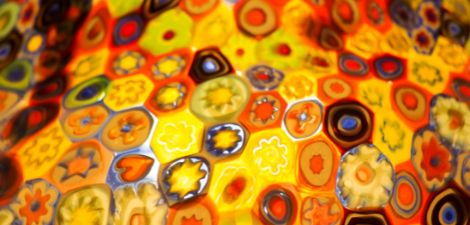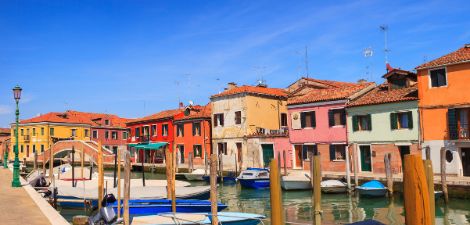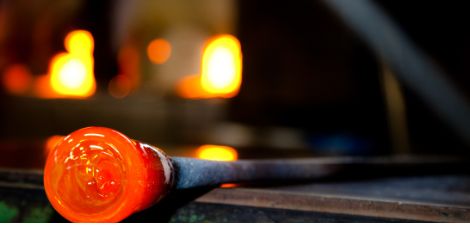
The history of Murano glass
The adventure of Venetian glass began about 1500 years ago.
Glassblowers from Aquileia, Italy, escaped barbaric attacks during the Roman Empire by traveling to the Venetian lagoon. Later, glassblowers from Byzantium and the Middle East added their talents to the city. Glass was used in public bathhouses and provided light and joy. Slowly more applications emerged, such as beads, mosaics, jewelry, mirrors and windows. But only the rich could afford this luxury, because glass was very expensive at the time.

The street scene of Murano is often characterized by canals. By the eighth century, Venice was a leading place for glass production, and by the end of the 13th century it was the most important industry. A Guild of Glassblowers was formed to regulate the industry. But the Guild had questionable motives. It called for a law requiring all glassblowers from Venice to move to the island of Murano. Afraid of fire in the wooden buildings of overpopulated Venice, they wanted to keep the glassblowers' kilns outside the city.

Therefore, in 1291 it was decided that all glassblowers living in Venice should move to Murano, a group of seven small islands connected by bridges. Isolating the craftsmen on Murano allowed their skills and secrets to thrive for centuries. This made Murano the glassblowers' paradise that it still is today.

It is interesting to note that not all historians believe that the glass artists were moved to Murano to protect Venice from fire. Many think the true purpose of this law was to isolate them so they couldn't share their trade secrets.
Not only were the artisans exiled to Murano, but in 1295 a law was passed banning them from leaving the island. Despite these restrictions, they were considered leading citizens of the island. They were allowed to carry swords, were protected by the Venetian state, did not work in the summer and their daughters married into the richest families in Venice.

This isolation allowed the craft to evolve, with many innovations and techniques originating in Murano. In the fifteenth century, Murano was known for cristallo, a fine, almost translucent glass, and lattimo, a milky glass. In later times, the island was known for its mirrors, chandeliers, glass beads, glass jewelry and much more. In 1450, a technological revolution marked the end of the Middle Ages and the beginning of a Renaissance. Angelo Barovier, a glass artist, discovered how to remove impurities from soda ash to make clear glass. The secrets that emerged from the work of families such as the Barovier family were treasured. Fathers in glassblowing families passed on their closely guarded glassmaking recipes to their sons.

In the 17th century, Murano glass fared less well, especially after Napoleon's conquest of Venice in 1797. Napoleon abolished all guilds, including the Guild of Glassblowers. By 1820, almost half of the 24 kilns that existed in 1800 had closed. Only five kilns still produced blown glass.
But over the years the industry recovered and new, prestigious companies were founded. Murano's glass artisans also began offering services to restore ancient Venetian mosaics, including those in the Basilica of St. Mark. After centuries of history and many challenges, the islands that form Murano are still synonymous with glass today, and its glassblowers are still highly revered.
Click here to admire the age-old mosaic technique in a necklace.

Leave a comment